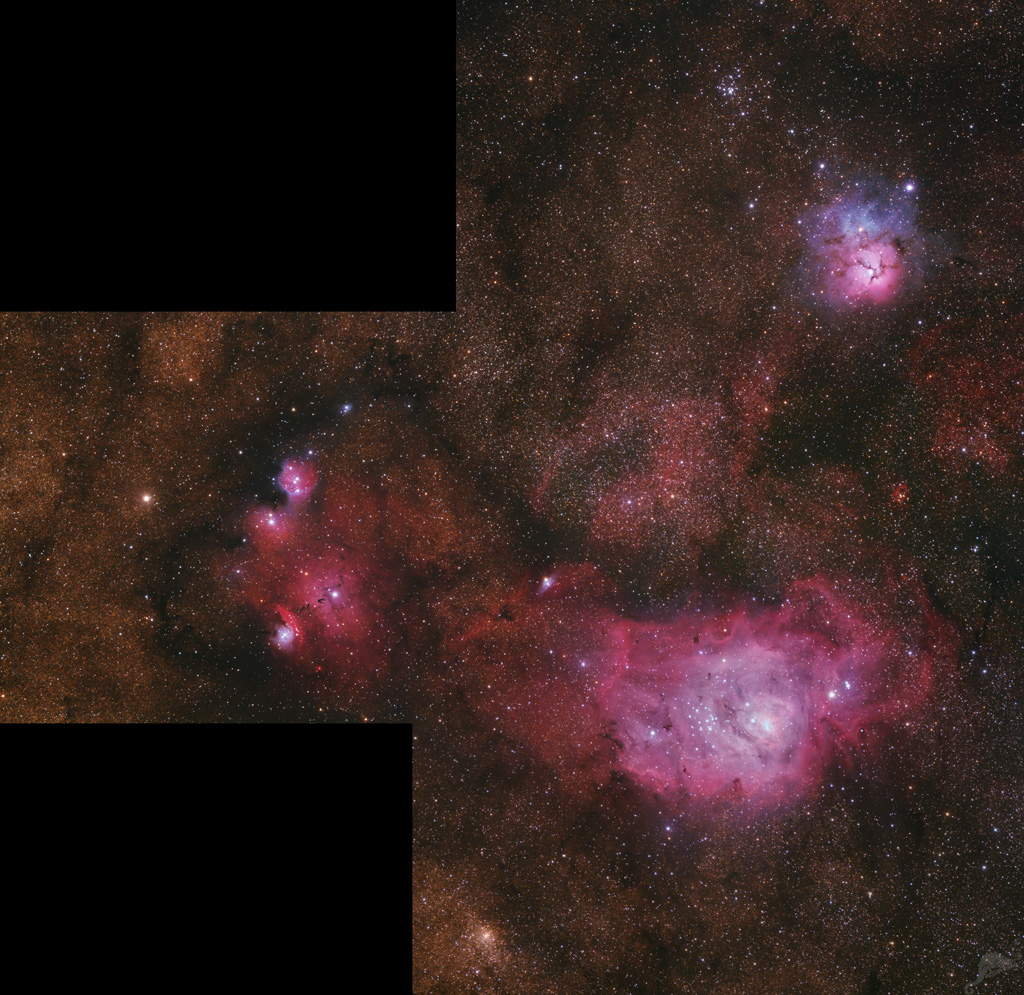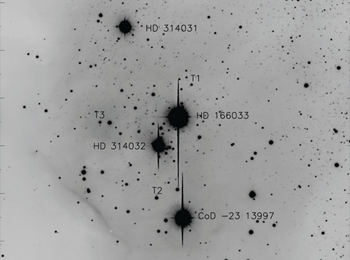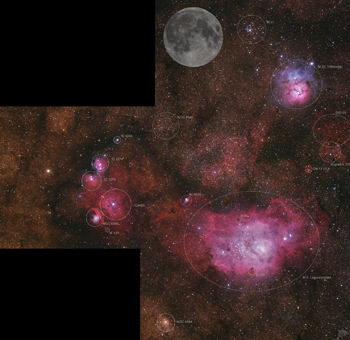 |
CHAMÄLEON + ONJALA OBSERVATORY DeepSky | SITEMAP HOME CHAMÄLEON |
|
 |
|||
| « back to overview Nebula | Load higher resolution (1800 x 1800 Pixel 3500 x 3500 Pixel) | Object description |

Detailed object description and higher resolution images of Messier 8 are shown here.. Detailed object description and higher resolution images of Messier 20 are shown here..
Messier 21 is an open star cluster with an apparent diameter of 15 arcminutes. It is classified by Trumpler as type I 3 m. The cluster contains about 60 stars, exceptional is a concentration of blue B supergiants in the core region. Because of these stars, which have a lifetime of only 10 to 15 million years, the age of M 21 is estimated to be about 4.5 million years.
The distance to the solar system is only vaguely known, the information varies between 2000- and 4000 light-years depending on the source. Depending on the assumed distance the physical diameter of M 21 is 8 or 16 light-years. The star cluster was discovered by Charles Messier on June 5, 1764.
 |
IC 1274, IC 1275, IC 4685 und NGC
6559 are H-II emission nebula regions intermixed with blue
reflection nebulae. IC 1274/75 are also cataloged as LBN 33. The entire region
is part of the large molecular cloud Lynd 227. The nebular region was first
described by Edward Emerson Barnard on June 25, 1892. IC 1274 contains a young open star cluster with 4 blue giant stars. For the whole region a distance of about 6000 light years is given and thus the nebular region is about 800 to 1000 light years farther away from the solar system than the Lagoon Nebula Messier 8. A detailed description of the nebular region can be found here. « Click here or the thumbnail to load a large annoted image .Source: https://iopscience.iop.org/article/10.1088/0004-6256/143/1/3 |
 |
NGC 4546 is an open star cluster,
classified as III 2 m by Trumpler. It contains
about 150 stars and its distance to the solar system is given as about 3000
light-years. NGC 6546 was discovered by John Herschel on June 27,
1837. NGC 6544 NGC 6544 is a small globular cluster, classified by Shapley as Type V. It stands about 10,000 light-years from the solar system and was discovered by Friedrich Wilhelm Herschel on May 22, 1784. A detailed scientific study can be found here. « Click here or the thumbnail to load a large annoted image and a size comparison to the full moon. |
 |
 |
 |
 |
 |
 |
 |
| Sun | Moon | Solar System | DeepSky | Widefield | Miscellaneous | Spec. Projects |